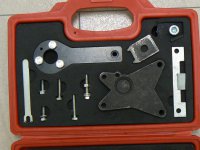- Joined
- Apr 27, 2021
- Messages
- 50
- Points
- 69
Being a person of advanced age, I swore that being able to afford more modern cars I would no longer buy older cars that needed “work “ doing.
So what do I do, buy a Sept 2009 registered Panda Eco 1.1 with 72500 miles on the clock, to use for volunteering work in,sometimes,dirty places, and save the family car.
So, I doubt that the timing belt has been changed, (due at 72,000). Do I do it myself? I’ve read about all there is to read on this forum, so it’s down to my choice. My question is this, how do I find out whether I have Panda2 or Panda3, when I’m looking for replacements, being that the car seems to be on the cusp of the change in 2009.
Also if I do decide to change the belt myself, I would use a timing belt tool kit, to be safe, but all I can see on EBay on the like, are kits suitable for 1.2 engine, Are they the same fitting?
Thanks. Sorry for being a bit long winded.
Richard
So what do I do, buy a Sept 2009 registered Panda Eco 1.1 with 72500 miles on the clock, to use for volunteering work in,sometimes,dirty places, and save the family car.
So, I doubt that the timing belt has been changed, (due at 72,000). Do I do it myself? I’ve read about all there is to read on this forum, so it’s down to my choice. My question is this, how do I find out whether I have Panda2 or Panda3, when I’m looking for replacements, being that the car seems to be on the cusp of the change in 2009.
Also if I do decide to change the belt myself, I would use a timing belt tool kit, to be safe, but all I can see on EBay on the like, are kits suitable for 1.2 engine, Are they the same fitting?
Thanks. Sorry for being a bit long winded.
Richard


